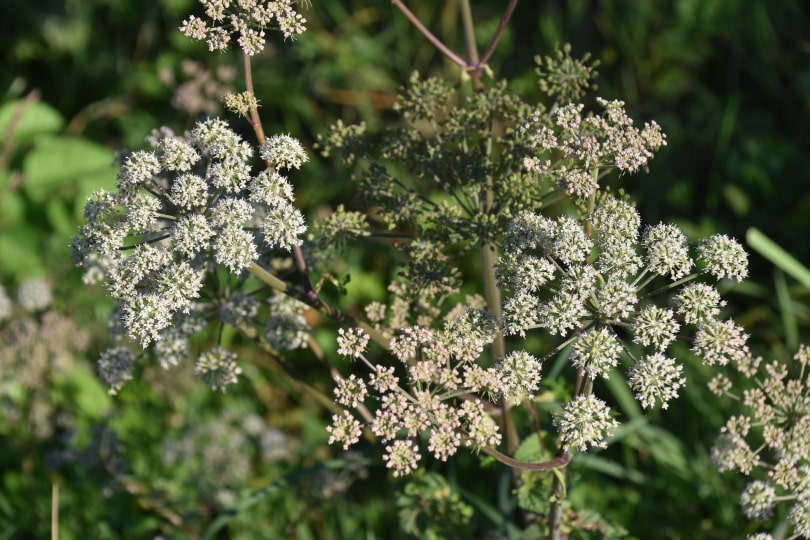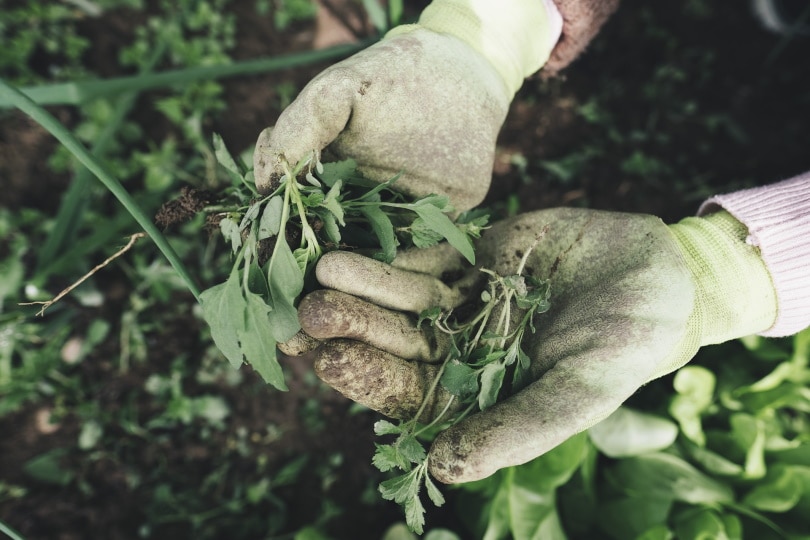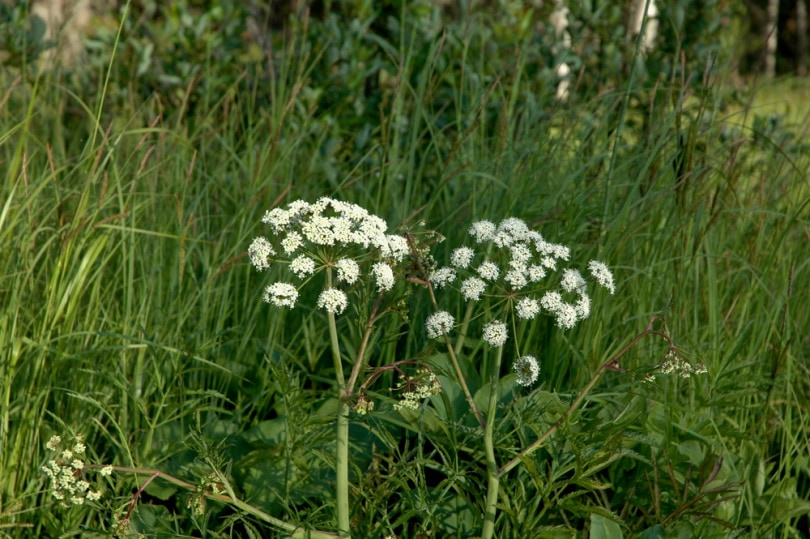Poison Hemlock: Identification, Management & Safety Advice
-
- Last updated:

While poison hemlock is only native to Europe and Northern Africa, it’s getting more of a foothold in North America. This invasive plant is extremely toxic and dangerous, which is why it’s essential for you to learn more about it.
Where can you find it, how do you identify it, and how dangerous is it? Also, how do you get rid of it if you have it growing on your property? We answer all those questions and more for you here.

How Dangerous Is Poison Hemlock?
While it depends on how much poison hemlock is around when you’re exposed to it, poison hemlock typically isn’t deadly to humans. However, keep in mind that some people have more severe reactions than others.
Common symptoms of poison hemlock exposure include blistering and skin discoloration. Moreover, ingesting poison hemlock can kill you without proper medical treatment. If you came into contact with poison hemlock, we highly recommend playing it safe and seeking out medical treatment as soon as possible.
If you find poison hemlock on your property, you need to remove it as soon as possible. It’s always best to wear long sleeves and gloves to keep yourself safe and avoid any potential adverse reactions.

How to Identify Poison Hemlock and Common Look-Alikes
If you’re trying to identify poison hemlock, the most important parts of the plant that you should look at are the stems and stalks. While a few different plants have similar-looking leaves, poison hemlock has a unique stem and stalk system that makes it relatively easy to identify.
Poison hemlock stems and stalks are hairless and hollow, which already helps you tell it apart from other, similar plants. Still, the real telltale signs of poison hemlock are the purple splotches that appear along the stem.
Most of the purple splotches are near the base of the plant, but you can often spot them all the way up to the top. When in bloom, poison hemlock flowers create white umbel-shaped flowers, though quite a few different plants have similar-looking flowers, including anise, celery, and cumin.
The leaves of poison hemlock are similar to parsley, chervil, and wild carrot, and many people mistake poison hemlock for one of these plants.
Where Can You Find Poison Hemlock?
Poison hemlock is an extremely versatile plant you can find throughout the continental United States and Europe. But while many people and governments do their best to prevent the spread of poison hemlock, it’s an incredibly fast-spreading plant.
Just one poison hemlock plant can spread up to 400 seeds each year. This is why it’s so important to act right away if you see poison hemlock starting to grow in your area.
To remove it, put on gloves and long sleeves, and pull out the entire plant, including the roots, to keep it from spreading or harming the local wildlife.

Advantages of Poison Hemlock
While the entire plant of poison hemlock is extremely poisonous, it’s not all bad. In fact, according to WebMD¹, scientists use parts of poison hemlock to make medicines for certain health conditions, like bronchitis, whooping cough, asthma, and even arthritis.
But while scientists can use poison hemlock this way, it’s extremely dangerous to try to do it yourself. Scientists need to grow, harvest, collect, and treat the plants and clippings properly to get their medicinal benefits. Do not try it yourself.
Disadvantages of Poison Hemlock
The disadvantages of poison hemlock are quite clear: It’s an extremely poisonous plant. Since it looks similar to other wild plants, like parsnip, parsley, and wild celery, it’s common for people to try to eat it.
Poison hemlock can also kill local wildlife and livestock and damage the local environment in other ways. Complicating containment efforts is the fact that poison hemlock spreads extremely easily.

Frequently Asked Questions (FAQs)
Now that you know more about this incredibly dangerous plant, it’s only natural to have a few questions. Here are the answers.
How Do You Remove Poison Hemlock?
If you have poison hemlock in your yard or garden, you have two options to remove it. First, you can use an herbicide to kill it, and then while wearing a long-sleeved shirt and gloves, you can pull the dead roots from the ground.
Second, you can skip the herbicide, wear a long-sleeved shirt and gloves to remove the plant, and double-bag it before throwing it away. Be sure to pull the entire plant from the ground, including the roots to keep it from growing back.

What Herbicide Kills Poison Hemlock?
While a few different herbicides can kill poison hemlock, one that’s enjoyed a great deal of success is glyphosate. Look for concentrations of at least 41%. Keep in mind that glyphosate is not safe around food and will kill other weeds and plants in the area.
Should You Cut Down Poison Hemlock?
You should not cut down poison hemlock. Not only will the poison hemlock grow back from the stem, but you’re also spreading poison hemlock particulates in the air. Even these can cause irritation and health problems if you breathe them in.
How Does Poison Hemlock End Up in Your Yard or Garden?
If you find poison hemlock in your yard or garden, it’s only natural to wonder how it ended up there if it’s not common in your area. The first option is from bird droppings. If a bird eats a poison hemlock seed, it can pass it through its system and be deposited somewhere else, and a plant will grow.
The second option is if you get contaminated soil. This is a rare occurrence but it can happen.


Conclusion
Now that you know more about poison hemlock, it’s up to you to take the necessary safety precautions to control the spread of poison hemlock in your area. Even more importantly, be sure to educate your family and keep them safe from this extremely dangerous plant.
Featured Image Credit: guentermanaus, Shutterstock
Contents

